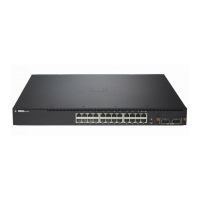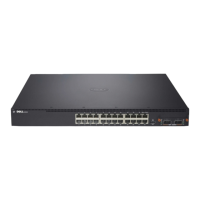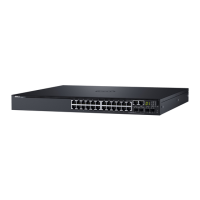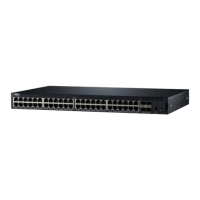78 Switch Features
Virtual Router Redundancy Protocol (VRRP)
VRRP provides hosts with redundant routers in the network topology without
any need for the hosts to reconfigure or know that there are multiple routers.
If the primary (master) router fails, a secondary router assumes control and
continues to use the virtual router IP (VRIP) address.
VRRP Route Interface Tracking extends the capability of VRRP to allow
tracking of specific route/interface IP states within the router that can alter
the priority level of a virtual router for a VRRP group.
For information about configuring VRRP settings, see "Configuring VRRP"
on page 1033.
Tunnel and Loopback Interfaces
PowerConnect 7000 Series switches support the creation, deletion, and
management of tunnel and loopback interfaces. Tunnel interfaces facilitate
the transition of IPv4 networks to IPv6 networks. A loopback interface is
always expected to be up, so you can configure a stable IP address that other
network devices use to contact or identify the switch.
For information about configuring tunnel and loopback interfaces, see
"Configuring Routing Interfaces" on page 843.
IPv6 Routing Features
IPv6 Configuration
The switch supports IPv6, the next generation of the Internet Protocol. You
can globally enable IPv6 on the switch and configure settings such as the IPv6
hop limit and ICMPv6 rate limit error interval. You can also control whether
IPv6 is enabled on a specific interface. The switch supports the configuration
of many per-interface IPv6 settings including the IPv6 prefix and prefix
length.
For information about configuring general IPv6 routing settings, see
"Configuring IPv6 Routing" on page 1057.
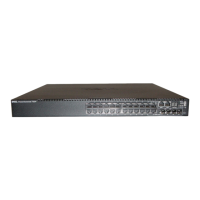
